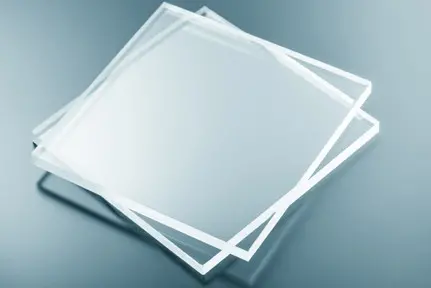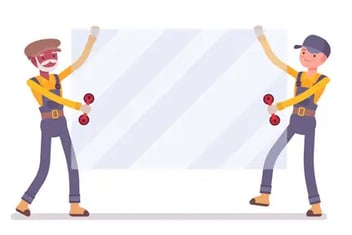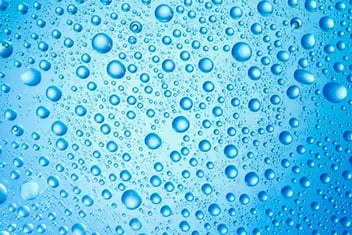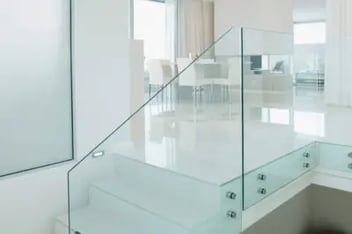
Toughened Safety Glass For Glass Pool Fencing and Glass Balustrade
What is toughened safety glass?
Safety Glass is also known as tempered glass or toughened glass. The glass used to make toughened glass is regular float glass that is made stronger(toughening) and safer(safety) by a process called tempering.
Why is toughened glass stronger?
The glass is heated in a furnace to 650˚C and rapidly cooled with jets of cool air, this tempering process strengthens the glass by up to 5 times that of ordinary float glass. The high-temperature heating changes the tensile and compressive strength characteristics of the glass.
Why is toughened glass safer?
Through the tempering process used in toughening, the glass is made much stronger in tensile and compressive strength, and this added strength affects the way the glass breaks, rather than breaking into large knife like shards, the glass will break into smaller less dangerous pieces called safety glass.
Is there an Australian Standard for toughened safety glass?
Yes, the current glass standard for toughened glass is AS2208:1996
How can you tell if a sheet of glass is toughened?
All safety glass should have a manufacturers stamp displaying the name of the certifying body, the licence number, the Australian standard code AS2208, the thickness of glass and the grade of glass, e.g., 12mm Grade A.
To obtain a licence to use the Australian Standards on the manufactured glass, the factory must undergo an inspection regime to determine their capability and quality assurance systems.
The licencing and certification to obtain AS2208 compliance is generally a bi-annual process and is carried out by globally recognized certification bodies.
How is Toughened Glass Made?
The process of toughening standard glass to create safety glass involves the use of a specialized conveyor furnace, the glass industry refers to these “ovens.”
Step 1. The float glass panels are cut to size, all holes, shapes, cutouts and edge work must be completed before toughening.
Step 2. The glass is then washed in a specialized glass washing machine.
Step 3. The glass is then loaded on to the furnace conveyor and travels into the heating chamber
Step 4. The glass is heated to temperatures greater than 600˚C
Step 5. The glass is quenched with high-pressure blasts of air at varying angles. The rapid cooling process causes the outside of the glass to cool at a faster rate the centre of the glass; this uneven cooling process increases the strength of the glass by up to 500%
Can toughened safety glass be cut?
No, once the glass has been toughened, it cannot be cut as the panel would shatter.
Can safety glass be drilled?
No, drilling a hole in toughened safety glass would cause the glass to break.
Can you grind safety glass?
No, using a grinder on toughened glass would break the panel; also a tip for using an angle grinder near safety glass, the sparks from a grinder will pit or burn the face of the toughened glass, be careful to cover the glass panels if using a grinder nearby.
Can safety glass shatter?
Yes, like all glass, toughed glass is still breakable, while it is up to fives times the strength of ordinary glass it is not unbreakable.
Can safety glass crack?
Yes and No! Safety Glass can crack, but the entire panel would break, not just a small area where an impact occurred.
Can safety glass explode?
Yes, when safety glass breaks, it will explode due to the difference in surface tensions on the glass created by the toughening process.
Safety glass can explode spontaneously by imperfections in the glass called Nickel Sulphide Inclusions, and it is rare that this type of breakage occurs
Can safety glass be broken?
Yes, all glass can be broken. Safety glass is up to five times stronger than normal glass, and it takes a tremendous force or a very small targeted impact to break the panel. The weakest points on a toughened glass panel are the corners and edges
How thick is safety glass?
Toughened glass used in frameless glass pool fencing and glass balustrade is usually 12mm thick glass, 8mm and 10mm glass are also used for lighter weight applications in glass gates, the thinner glass is lighter and puts less stress on the hinging components.
What is heat soaked safety glass?
Heat soaked safety glass is toughened glass that has had a secondary heat processing applied to the glass panel. The process of heat soaking the glass is an additional safety measure used to prevent the potential failure of the glass by the spontaneous explosion.
Why does toughened glass require heat soaking?
All glass can potentially have impurities from the manufacturing process; the most common impurity is tin, small impurities on the surface of the glass, tin marks are created by the float glass manufacturing process as the molten glass is poured onto a liquid bath of tin. Tin marks on the glass are generally not a significant risk to the integrity of the glass.
Nickel Sulphide inclusions(NSi). The NSi are small stone like impurities; these stone-like structures can occur in the manufacturing of float glass. The risk of NSi being a problem in the glass is when the float glass goes through the tempering process to create toughened safety glass, the tempering process changes the surface tension of the glass and traps the tiny stone. The Nickel Sulphide Inclusion can react to sudden temperature changes in the glass, the small stone wants to expand and cannot do so in the toughened glass, the only way out is to shatter the entire piece of glass.
By heat soaking the glass, the process accelerates the chance of the glass breaking due to the Nickel Sulphide inclusion. The heating process expands the fault and causes the panel to break in a controlled environment.
How is Glass Heat soaked?
The process of heat soaking toughened glass to involves the use of a specialized heat soaking oven.
Step 1. The finished toughened glass is loaded onto trolleys that separates the glass panels
Step 2. The trolleys are wheeled into the heat soaking oven and heated to 250˚C and held at that temperature for two hours. If there are any inclusions in the glass, the heating process will break the glass.
Step 3. The computer controlled oven completes the heating process and then allows the glass to cool to ambient temperature
Step 4. The broken panels are removed from the batch, and the remaining panels are now heat soaked.
Is Heat Soaked glass stronger than toughened glass?
No, the strength characteristics of heat-soaked glass are identical to that of toughened glass.
Why is heat soaked glass safer?
The heat soaking process all but removes the possibility of spontaneous breakage of the glass panel, therefore making it much safer than standard toughened glass.
Is there an Australian Standard for heat soaked glass?
No, in Australia we adopt the use of the European Standard for glass heat soaking, referenced as EN14179-1:2016
Where is heat soaked glass used?
Heat soaking is predominantly used for balustrade applications where the risk of glass failure could cause severe damage to life and property.

Download this free pool fence guide now
Read On

Handling glass panels - Exakt Glass
Handling glass panels Our glass panels are made from toughened safety glass, and the glass is very...



